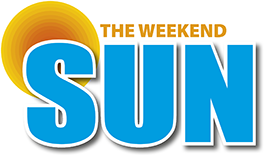 |
Sports correspondent & historian with |
One of the biggest sporting events held in New Zealand each year hits Mount Maunganui this week.
Starting on Thursday and ending on Super Sunday, the New Zealand Surf Lifesaving National Championships is where a myriad of national champions will be crowned.
More than 1500 surf athletes will hit Mount Main Beach, ranging from Masters who have lost track of the number of nationals they have attended through to 14 year olds experiencing their first big event.
Surf sport is widely considered the retention tool of surf lifesaving, where athletes must complete a required number of patrol duty hours each season to be able to compete in the waves of surf sport.
As the countdown to every nationals begins, I always remember my great mate, the late Murray Haxton.
Known to all in surf lifesaving simply as Hacko, he held legendary status in the movement.
Murray Haxton won three consecutive surf races, dominating the competition from 1952 through to 1954.
His record of three successive surf race titles stood until Glen Anderson repeated the feat some 50 years later.
Haxton also won national titles in the team surf race event and R&R competition.
He won two Olympic medals as a member of the New Zealand team, when surf lifesaving was staged at the 1956 Melbourne Olympics as a demonstration sport.
The events and competition that today's surf athlete will participate in, are light years removed from Hacko's first nationals at Lyall Bay in Wellington in 1950.
Today's competitors will continue the tradition of the events being modeled on the origins of surf rescue.
The original surf lifesaving competition was the Six-Man R&R (Rescue and Resuscitation) using the belt, line and reel used in surf rescues of the day.
The first Surf Lifesaving Championships was a one-off competition held in Napier during 1915. They recommenced in 1921, with the Six-Man R&R competition the only event, until the beltman and Four-Place R&R were introduced in 1927.
Individual and team surf races made their debut at the 1934 nationals held at the flat-water beach at Takapuna in the City of Sails.
Junior male competition made a limited entrance in 1934 with women's competition introduced during 1944.
Just the March Past and Six and Four person R&R opened women's introduction to surf sport.
Speed on the sand at the start of a rescue was the catalyst behind the introduction of beach sprints and relays in 1948.
The main event on the last day of every nationals was the March Past.
Every club would line up with their lead lifeguard holding their club pennant aloft, followed by four club members carrying a rescue reel, and the rest of the club competitors in close attendance.
There was never a more spectacular Surf Lifesaving March Past on the Mount Main Beach, than on February 9, 1963, when Queen Elizabeth and the Duke of Edinburgh attended a surf carnival as part of their visit to Tauranga.
The desire to uphold the proud traditions of surf lifesaving will be proudly on display in front of the Mount Maunganui Lifeguard Service from Thursday through to Super Sunday finals day this week.
